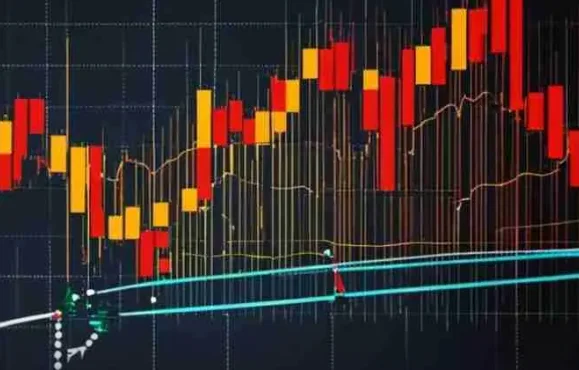How to make money online has become an attractive proposition for many, and one of the most lucrative methods is through Forex trading. The foreign exchange market, or Forex, is the largest and most liquid market in the world, offering numerous opportunities for profit. This blog post delves into effective Forex trading strategies, market trends, and investment tips to help you succeed in this dynamic field.
Understanding Forex Trading
What is Forex Trading?
Forex trading involves buying and selling currencies to profit from changes in their exchange rates. Traders speculate on whether a currency will rise or fall in value relative to another currency, executing trades based on their predictions.
The Basics of Forex Trading
To start trading Forex, you need to understand key concepts such as currency pairs, pips (the smallest price move in a currency pair), leverage (borrowing funds to increase trading potential), and margin (collateral needed to open and maintain positions). Familiarize yourself with trading platforms and tools, such as MetaTrader 4 or 5, which offer charting and analysis capabilities.
Effective Forex Trading Strategies
1. Trend Following Strategy
Identifying Trends
The trend following strategy involves identifying and trading in the direction of market trends. Use technical analysis tools like moving averages, trendlines, and the Relative Strength Index (RSI) to spot trends. Look for higher highs and higher lows in an uptrend, and lower highs and lower lows in a downtrend.
Executing Trades
Once a trend is identified, enter trades in the direction of the trend. Use stop-loss orders to manage risk and protect your capital. For example, in an uptrend, place a stop-loss below the most recent low.
2. Range Trading Strategy
Recognizing Ranges
Range trading involves identifying currencies that are trading within a specific range. Look for levels of support (where the price tends to stop falling) and resistance (where the price tends to stop rising).
Trading the Range
Buy at support levels and sell at resistance levels. Use technical indicators like Bollinger Bands or the RSI to confirm range boundaries. Always set stop-loss orders outside the range to manage risk.
3. Breakout Strategy
Detecting Breakouts
A breakout strategy aims to capitalize on significant price movements that occur when the price breaks out of a range or pattern. Use chart patterns like triangles, flags, and head-and-shoulders to identify potential breakouts.
Capitalizing on Breakouts
Enter trades when the price breaks above resistance or below support. Confirm the breakout with increased volume or volatility indicators. Set stop-loss orders close to the breakout level to minimize losses if the breakout fails.
4. Carry Trade Strategy
Understanding Carry Trade
The carry trade strategy involves borrowing funds in a currency with a low interest rate and investing them in a currency with a higher interest rate. The goal is to profit from the interest rate differential.
Implementing Carry Trade
Identify currencies with significant interest rate differentials. Use fundamental analysis to assess economic conditions and central bank policies. Be mindful of exchange rate risks and geopolitical events that could impact interest rates.
Keeping Up with Market Trends
1. Economic Indicators
Stay informed about key economic indicators such as GDP growth, unemployment rates, inflation, and interest rates. These indicators influence currency values and can provide insights into potential market movements.
2. Central Bank Policies
Monitor central bank policies and statements, as they play a crucial role in Forex markets. Interest rate decisions, quantitative easing programs, and economic forecasts from central banks like the Federal Reserve, European Central Bank, and Bank of Japan can significantly impact currency pairs.
3. Geopolitical Events
Geopolitical events such as elections, trade negotiations, and conflicts can cause market volatility. Stay updated on global news and assess how these events might affect currency markets.
Investment Tips for Forex Traders
1. Educate Yourself
Invest in your education by reading books, taking online courses, and following reputable Forex trading blogs and forums. Understanding market dynamics and trading strategies is essential for success.
2. Practice with Demo Accounts
Before risking real money, practice trading with demo accounts. This allows you to test your strategies and gain experience without financial risk.
3. Risk Management
Effective risk management is crucial in Forex trading. Never risk more than you can afford to lose, and use stop-loss orders to limit potential losses. Consider the 1% rule, where you risk only 1% of your trading capital on a single trade.
4. Develop a Trading Plan
Create a detailed trading plan outlining your goals, risk tolerance, and strategies. Stick to your plan and avoid making impulsive decisions based on emotions.
5. Stay Disciplined
Discipline is key to successful trading. Follow your trading plan, maintain a calm and rational mindset, and avoid chasing losses. Consistency and patience are essential for long-term profitability.
6. Diversify Your Portfolio
While specializing in Forex trading, consider diversifying your investments across different asset classes such as stocks, bonds, and commodities. Diversification can reduce risk and enhance overall portfolio performance.
Conclusion
Making money online through Forex trading requires knowledge, strategy, and discipline. By understanding Forex basics, employing effective trading strategies, staying informed about market trends, and adhering to sound investment practices, you can navigate the Forex market with confidence. Remember, continuous learning and adaptation are essential in the ever-evolving world of Forex trading. Happy trading!

Brandy Stewart, an enchanting wordsmith and seasoned blogger, weaves compelling narratives that transport readers to uncharted territories. Infused with perceptive viewpoints and dynamic storytelling, Doris exhibits a command of language that enthralls both hearts and minds, leaving a lasting mark on the literary panorama.

